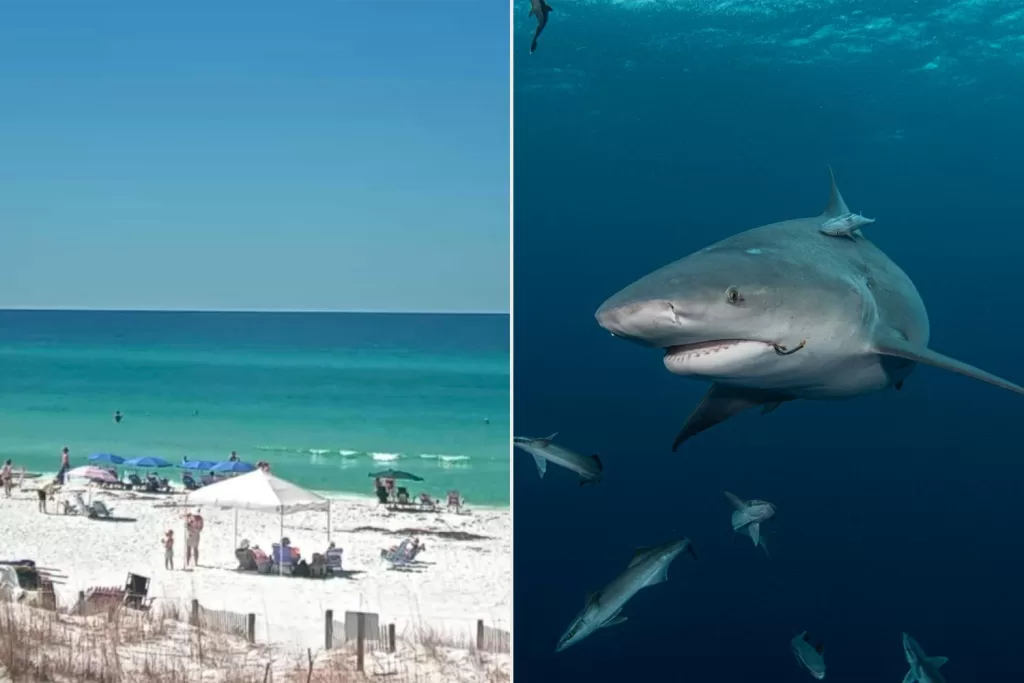Although they all think the shark attacks on June 7 in South Walton were a tragedy, local charter boat captains are not surprised.
“It’s just a matter of Mother Nature and opportunity,” said Capt. Gary Jarvis, who has been fishing out of Destin for more than four decades.

“The problem is the shark population in the Gulf of Mexico is large and more prolific than it has ever been, at least in my lifetime,” Jarvis said.
“There are more sharks now than there were 44 years ago … because they banned any harvest of them,” Jarvis said, noting some sharks have been designated as endangered.
Related shark coverage:After shark attacks in Florida, experts urge beachgoers not to panic
Jarvis said for the last decade they have talked to the National Marine Fisheries about the abundance of sharks and how things are getting out of balance. He said there is a false perception that sharks are endangered.
“There are more people that swim in the water than before and there are more sharks in the water than ever before. So, the incident rate of shark bites is only going to go in one direction,” Jarvis said.
A 45-year-old woman and two teen girls were injured the June 7 attacks, which happened about 90 minutes apart and about 4 miles apart.
Were conditions different on Friday, June 7, when the attacks happened?
“Sharks eat. That is what they do. They eat everything,” Jarvis said. The eat wave boards, beer cans, birds and even other sharks.
The original story:Three people injured in two shark attacks; beaches closed in Walton County
“If that thing is hungry, he is going to try and eat whatever is close by. They just happen to be what was close by,” he said.
“There was nothing different … from a professional fisherman’s perspective,” Jarvis said.
“I see hundreds of sharks every single day,” he said.
Jarvis said they see 40 to 50 sharks every time they are bait fishing at the mouth of the pass.
https://www.instagram.com/p/C7-kBPXSmZ9/?utm_source=ig_web_button_share_sheet
He also said he’s spotted a 6-foot bull shark swimming around his dock at the Ships Chandler in the harbor on several occasions.
“And they are not really nice guys,” Jarvis said of the bull shark.
“If I was a betting man, I’d probably say that most likely that was a bull shark that attacked the swimmers,” he said, noting that those sharks are really aggressive.

Capt. Judah Barbee, who regularly shark fishes, was of the same opinion on the type of shark.
“If I had to guess, I’d say a bull shark. They are being so aggressive right now. We had one latch on to the side of the boat the other day. You could hear it crunching the fiberglass,” Barbee said.
Sharks are aggressive when mating
Barbee, who was shark fishing when contacted by a reporter for this story, said sharks are mating right now.
“When sharks mate, they bite each other. They grab each other by the fin and hold while they are doing their thing. They bit each other up really bad … aggressive, brutal. I think that is some of what’s going on,” Barbee said.
‘Definitely not geared up for that’:Destin boat hooks 20-foot great white shark
He said when they catch shark right now, they show signs of bites, and the bites are fresh.
“And when we reel one in, there’s another one right there with it … which is usually a sign they are mating,” Barbee said.
“I think it (the attacks) was confusion … may have thought it was another shark. They are extremely aggressive when they are mating,” he said.
Barbee said he usually sees sharks mating in May and June.
Sharks follow the bait
In addition to mating, the sharks that attacked may have been looking for food. Barbee said they are chasing redfish, bait fish and some of the bigger shark are chasing tarpon.
“They are just following the food,” Barbee said. “Nothing we can really do about it.
Capt. Katie Anderson, who was out pompano fishing in South Walton early on June 7, said there has been a ton of bait close in lately.
‘Up close and personal’:Local captains say catching a shark is a thrilling experience
“I just think they were further in because the bait was further in. Sharks are just following the bait.”
In fact, Anderson said they spotted an 8-foot shark just swimming down the beach that morning.
“The sharks are everywhere, from 12 inches of water out to 12,000 fathoms. There are no fences,” Jarvis said.

“Sharks are in close, and they always have been, but not in the numbers they are now,” said Capt. Neill Finkel.
“They’ve been protected now long enough. They need to at least have a season on them,” Finkel said.
Finkel said they have been catching sharks less than a mile off the beach for the last 10 years on an everyday basis, and big sharks in the 400-pound range.
Barbee, who was fishing on June 10 right off the beach, had already hooked 10 sharks in the first two hours of his charter trip.
“We’ve been catching a ton of sharks, mainly bull sharks,” Barbee said.
“There’s a lot of sharks … that’s just the way it is,” Jarvis said.
As for the attacks on June 7, Jarvis again said there was nothing “peculiar” about the situation.
“It can happen again tomorrow, that’s what is unsettling … or three months,” Jarvis said.
An interview with Gavin Naylord, director of the Florida Program for Shark Research
To learn more about what could have caused the June 7 shark attacks, we spoke with Gavin Naylor, director of the Florida Program for Shark Research at the Florida Museum of Natural History, located on the campus of the University of Florida.
The first question for Naylor concerned the recent sightings of two Orcas, known as killer whales, just offshore Destin earlier in the week. In the days after the June 7 attacks, many on social media wondered whether the Orcas’ presence Might have pushed sharks closer to shore.
Could this have caused sharks to come closer to shore?
“No,” said Naylor.
Naylor explained that Orcas would necessarily target smaller sharks, like tiger or bull sharks, as those are found closer to shore, whereas Orcas are commonly found in much deeper water.
“We don’t know anything about Orca behavior in the Gulf (of Mexico). There’s no evidence that they’re just targeting sharks whatsoever. So it’s just a blind, transitive explanation based on rumor and little evidence. It’s a stretch and there is no evidence to support it,” Naylor said.
Naylor was asked if the increased sea-surface temperatures in the Gulf of Mexico likely caused sharks to come closer to shore. Naylor said the conditions were favorable for shark activity along with wind direction.
“Sea-surface temperatures with the right wind conditions can blow in some of the plankton close to the shore, and the plankton is fed on by menhaden, and menhaden is food for sharks. If the menhaden come in close, for whatever reason, the sharks will follow, and if there are people in the water, then you have a problem,” Naylor said.
Naylor went over a single, unverified eyewitness account that on the date of the shark attacks, a freshwater estuary close to the location wasn’t producing the amount of brackish water that had been seen on the days before the attacks.
Naylor explained that the outflow from these estuaries pushes water offshore. Without that flow, a “lens on salty water” would have the opportunity to come closer to the shore, creating an environment favorable for bait fish and sharks to be seen closer to shore.
Naylor was asked what residents and tourists can do to protect themselves from shark encounters. This includes wearing polarized sunglasses, staying away from bait fish, removing any reflective jewelry, staying in groups, avoiding swimming at dawn or dusk and, if bitten, reversing “peacefully” out of the water, facing the shark at all times.








